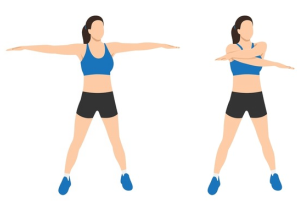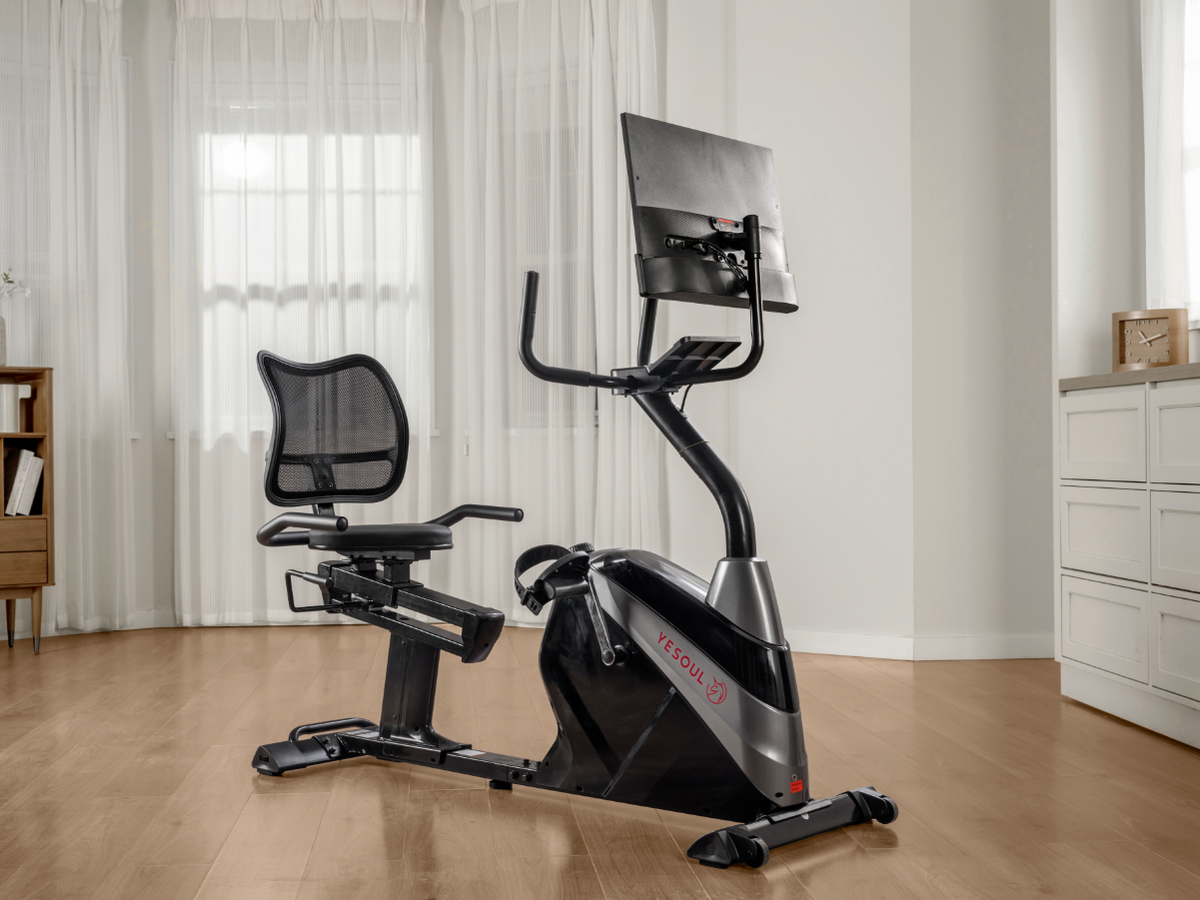Stretching—More Than Just a Warm-Up
Stretching is often regarded as a casual add-on to fitness routines. However, its role in improving performance, enhancing flexibility, and preventing injury has been increasingly validated by science. Whether you're lifting weights, running, rowing, or practicing yoga, stretching—both before and after your workout—is critical for muscle preparation, joint health, and long-term physical resilience.
This article explores the biomechanical benefits, timing, and types of stretching, and offers practical guidelines supported by evidence-based research from reputable sources such as Gold's Gym, Aegis Physical Therapy, and Exercise.co.uk.
Pre-Workout Stretching – Priming the Body for Performance
1. Why Pre-Workout Stretching Matters
Before engaging in physical activity, your body must be gradually prepared for the upcoming physical demands. Pre-workout stretching—particularly dynamic stretching—serves to increase blood flow, improve joint mobility, and elevate core body temperature. According to Gold's Gym (source), dynamic stretching before a workout can improve neuromuscular coordination and enhance range of motion, ultimately allowing for better movement patterns.
2. Dynamic vs. Static Stretching: Choose Wisely
Static stretching (holding a muscle in a lengthened position for an extended period) has traditionally been used before workouts. However, studies have shown that static stretching can temporarily reduce muscle strength and power if performed immediately prior to intense activity (Exercise.co.uk).
Therefore, dynamic stretching is now widely recommended for warm-ups. Unlike static stretches, dynamic stretches involve movement and mimic the activity to follow, preparing the body both mentally and physically.
3. Recommended Pre-Workout Dynamic Stretches
Dynamic stretching is an essential component of a well-rounded warm-up routine. Unlike static stretching, which involves holding a position, dynamic stretches use controlled, active movements to prepare muscles and joints for physical activity. This form of stretching increases heart rate, boosts circulation, and primes the neuromuscular system for performance.
To ensure a balanced warm-up, it's important to incorporate both lower-body and upper-body dynamic stretches, even if your workout primarily focuses on the legs. A well-structured dynamic warm-up should include movements that activate the hips, hamstrings, shoulders, and core to promote full-body mobility and stability.
Lower-Body Dynamic Stretches (Primary Focus)
Since many of our workouts emphasize lower-body strength and endurance, these dynamic stretches are crucial:
Leg Swings (Forward/Back & Side-to-Side) – Loosens tight hip flexors, hamstrings, and adductors, improving mobility for running, jumping, and squatting.

Walking Lunges with Torso Twist – Activates the quads, glutes, and core while enhancing balance and rotational mobility.

High Knees – Elevates heart rate while dynamically stretching the hip flexors, calves, and core.

Butt Kicks – Warms up the hamstrings and promotes lower-body coordination.

Upper-Body Dynamic Stretches (Secondary but Essential)
Even in lower-body-dominant workouts, the upper body plays a supportive role in stability and posture. Include these movements to maintain balance:
Arm Circles & Swings – Warms up the shoulders, chest, and upper back, preventing stiffness during exercises like weighted carries or jumps.

Shoulder Rolls & Banded Pull-Aparts (if using a resistance band) – Activates the rotator cuff and upper back muscles, improving shoulder mobility.

Torso Twists (Standing or Seated) – Engages the core and promotes spinal mobility, which is essential for maintaining proper form in squats and lunges.

Full-Body Integration
For a comprehensive warm-up, consider movements that bridge upper and lower body engagement:
Inchworms – Stretches the hamstrings while activating the shoulders and core.

Jumping Jacks – Elevates heart rate while dynamically moving the arms and legs.

Aim to spend 5–10 minutes on dynamic stretches before your workout, adjusting the ratio of upper-to-lower body movements based on your training focus. For lower-body-dominant sessions, allocate about 70% of the warm-up to legs/hips and 30% to upper body/core.Focus on smooth, deliberate motions—this is about gradually increasing range of motion and muscle temperature, not pushing to the point of discomfort.
By incorporating both upper- and lower-body dynamic stretches, you'll enhance performance, reduce injury risk, and ensure balanced mobility for any workout.
Part II: Post-Workout Stretching – Repair, Recover, Rebuild
1. The Purpose of Post-Workout Stretching
After intense activity, your muscles are shortened, tense, and potentially inflamed. Static stretching post-exercise is essential for helping muscles return to their resting length, reducing soreness, and promoting circulation for faster recovery.
Aegis Physical Therapy reports that stretching post-workout can reduce delayed onset muscle soreness (DOMS) and lower your injury risk over time (Aegis PT).
2. Physiological Benefits of Post-Workout Stretching
Post-workout stretching provides several important physiological benefits that aid in recovery and overall physical performance. Firstly, it helps reduce the buildup of lactic acid in the muscles, which is a common cause of post-exercise soreness and fatigue. By promoting increased blood flow, stretching supports the removal of this metabolic waste, helping muscles feel less tight and more refreshed.
Additionally, stretching after exercise prevents muscle stiffness by allowing muscle fibers to return to their normal resting length. This process helps maintain muscle elasticity and reduces the risk of discomfort or injury in future workouts. Enhanced blood circulation during stretching also delivers essential nutrients and oxygen to the muscles, accelerating tissue repair and recovery.
Moreover, regular post-exercise stretching improves flexibility and joint range of motion over time. This increased mobility supports better functional movement and decreases the likelihood of overuse injuries. In short, post-workout stretching is a simple yet effective practice that promotes muscle recovery, reduces soreness, and improves long-term physical resilience.
2. Recommended Post-Workout Static Stretches
Hold each static stretch for 20–30 seconds, repeating 2–3 sets per muscle group:
Hamstring Stretch: Sit with one leg extended and reach toward your toes

Quadriceps Stretch: Stand on one leg, pull the opposite ankle toward the glutes.

Shoulder Cross-Body Stretch: Pull one arm across the chest to release tension.
Calf Stretch: Place hands against a wall, extend one leg behind you, heel on the ground.

Child's Pose (Yoga Stretch): Stretches the lower back, hips, and shoulders.

Make sure you are breathing deeply and slowly throughout your stretches, encouraging both mental and physical relaxation.
Part III: Mistakes to Avoid When Stretching
Even with good intentions, improper stretching can do more harm than good. Common mistakes include:
Bouncing or jerking (ballistic stretching): This can lead to micro-tears in the muscle fibers.
Holding your breath: Breath-holding increases muscle tension—always breathe deeply.
Stretching cold muscles statically: Always warm up before static stretches.
Overstretching:You should feel gentle tension, never pain. Overstretching can damage tendons and joints.
Stretching should be pain-free, controlled, and adapted to your body's unique needs and limitations.
Part IV: Stretching and Injury Prevention
Injury prevention is one of the most compelling reasons to incorporate stretching into your regular fitness routine. As noted by SportsCare Physical Therapy, consistent stretching helps reduce the risk of several common injuries by improving flexibility, maintaining muscular balance, and supporting joint stability.
Regular stretching plays a vital role in preventing common exercise-related injuries by improving flexibility, maintaining muscle balance, and supporting joint stability. One key benefit is the reduction in muscle strains, which often occur when muscles are tight or not properly prepared for sudden movement. Stretching enhances muscle elasticity, reducing the risk of overstretching or tearing.
It also helps prevent ligament sprains, especially in joints like the ankles and knees. Improved flexibility around these joints decreases excessive tension on the ligaments, making them less prone to injury during dynamic or impact-heavy movements.
In cases of tendinitis, which is caused by repetitive stress on tendons, stretching helps reduce muscle tightness that contributes to tendon overloading. This is particularly beneficial for areas like the shoulders, elbows, and Achilles tendon.
Finally, stretching can significantly reduce the risk of lower back injuriesby loosening tight hamstrings, hip flexors, and spinal muscles. This supports better posture and reduces lumbar spine strain. By promoting muscular balance and smoother movement patterns, stretching becomes an essential tool in long-term injury prevention.
Part V: Stretching and Athletic Performance
Stretching isn't just about gaining flexibility—it's a key tool for developing functional mobility, which directly impacts movement efficiency, coordination, and power output. As highlighted by Exercise.co.uk, incorporating dynamic stretching into your warm-up can significantly improve athletic performance by enhancing reaction time, agility, and sprint speed, especially when combined with sport-specific drills.
One major benefit of regular stretching is enhanced posture and movement mechanics. Tight or imbalanced muscles can pull the body out of alignment, leading to poor form and compensatory patterns. Stretching helps lengthen overactive muscles and restore symmetry, allowing the body to move more efficiently and safely.
For runners, stretching can lead to increased stride length by loosening the hip flexors, hamstrings, and calves. This not only improves running efficiency but also reduces energy expenditure per stride, contributing to better endurance and speed.
In sports like rowing and swimming, stretching supports improved stroke efficiency. Greater shoulder and thoracic spine mobility enables smoother, more powerful strokes, while reducing the risk of repetitive strain injuries.
Finally, stretching promotes better joint health and muscle coordination. By improving range of motion and neuromuscular control, athletes can move with greater precision and stability, which enhances both performance and recovery outcomes.
Part VI: Practical Guidelines for a Balanced Stretching Routine
To reap the full benefits of stretching, consistency is key. Here's how to structure your routine:
|
Timing |
Type of Stretch |
Duration |
Purpose |
|
Before Workout |
Dynamic Stretching |
5–10 minutes |
Warm up, activate muscles, improve mobility |
|
After Workout |
Static Stretching |
5–15 minutes |
Cool down, enhance recovery, reduce soreness |
|
On Rest Days |
Gentle Yoga or Static |
10–20 minutes |
Maintain flexibility and joint health |
You can also use tools such as foam rollers or massage balls to complement your stretching and enhance myofascial release.
Conclusion: Stretch With Intention
Stretching is more than just a pre- or post-workout ritual—it's a vital practice that safeguards your body and enhances your fitness journey. From activating muscles before a workout to helping them relax and recover afterward, stretching improves mobility, reduces injury risk, and boosts performance.
Make stretching a habit, listen to your body's cues, and approach each session with care. Over time, you'll notice greater fluidity in your movements, fewer aches, and stronger workouts.
References
1、Gold's Gym. (n.d.). The Importance of Stretching Before and After Workouts. Link
https://goldsgym.com.np/the-importance-of-stretching-before-and-after-workouts/
2、Aegis Physical Therapy. (n.d.). 5 Benefits to Stretching Before and After You Exercise. Link
https://aegisphysicaltherapy.com/5-benefits-to-stretching-before-and-after-you-exercise/
3、SportsCare Physical Therapy. (n.d.). 6 Benefits of Stretching Before and After Workouts. Link
https://sportscarephysicaltherapy.com/6-benefits-of-stretching-before-and-after-your-workout/
4、Ortho Sports Med. (n.d.). Benefits of Stretching Before & After Your Workout. Link
https://orthosportsmed.com/benefits-stretching-before-after-workout/
5、Exercise.co.uk. (n.d.). 10 Things to Know About Stretching Before and After Exercise. Link
https://exercise.co.uk/learn/10-things-to-know-about-stretching-before-and-after-exercise/





Leave a comment
All comments are moderated before being published.
This site is protected by hCaptcha and the hCaptcha Privacy Policy and Terms of Service apply.